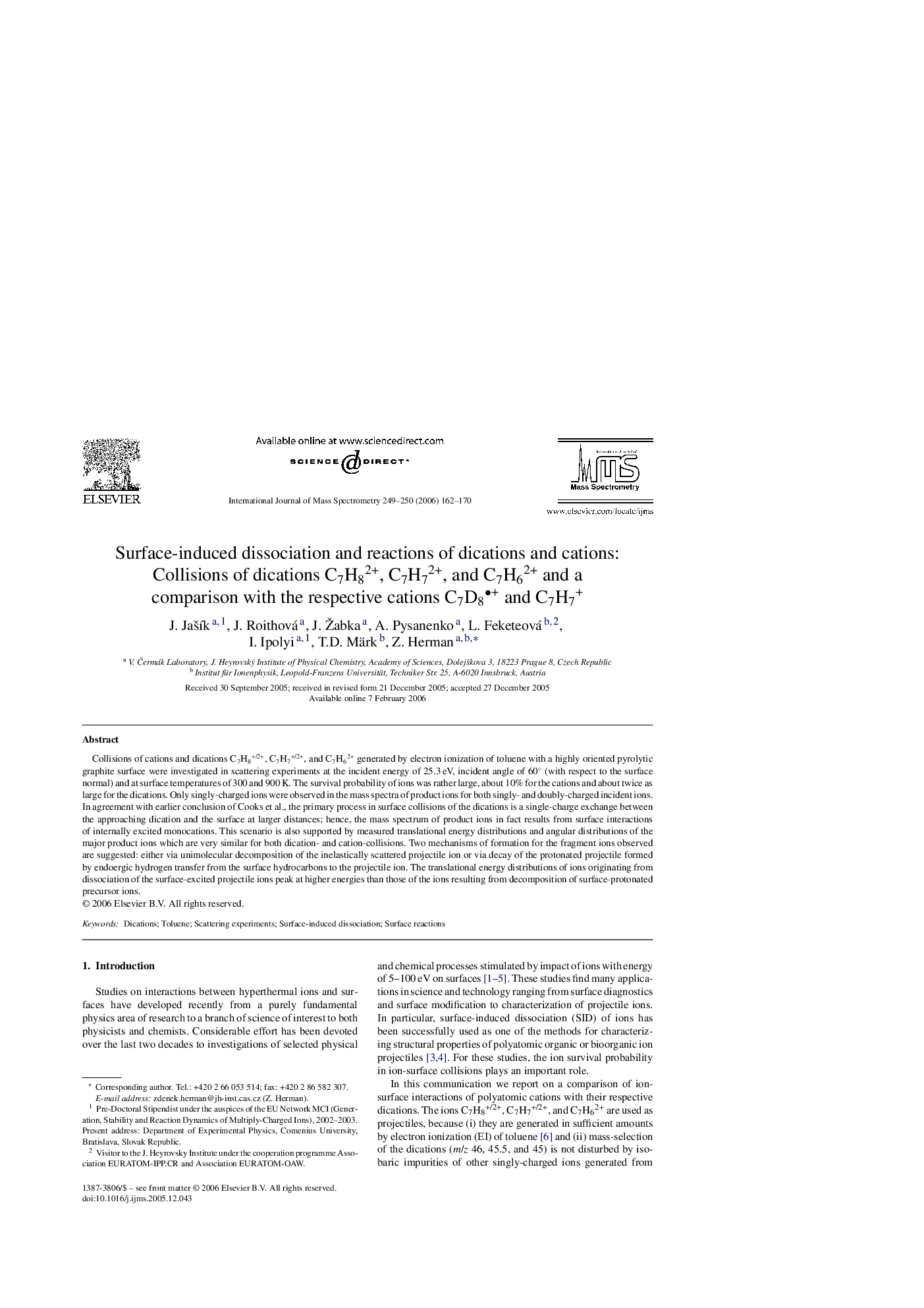| Article ID | Journal | Published Year | Pages | File Type |
|---|---|---|---|---|
| 1194309 | International Journal of Mass Spectrometry | 2006 | 9 Pages |
Collisions of cations and dications C7H8+/2+, C7H7+/2+, and C7H62+ generated by electron ionization of toluene with a highly oriented pyrolytic graphite surface were investigated in scattering experiments at the incident energy of 25.3 eV, incident angle of 60° (with respect to the surface normal) and at surface temperatures of 300 and 900 K. The survival probability of ions was rather large, about 10% for the cations and about twice as large for the dications. Only singly-charged ions were observed in the mass spectra of product ions for both singly- and doubly-charged incident ions. In agreement with earlier conclusion of Cooks et al., the primary process in surface collisions of the dications is a single-charge exchange between the approaching dication and the surface at larger distances; hence, the mass spectrum of product ions in fact results from surface interactions of internally excited monocations. This scenario is also supported by measured translational energy distributions and angular distributions of the major product ions which are very similar for both dication- and cation-collisions. Two mechanisms of formation for the fragment ions observed are suggested: either via unimolecular decomposition of the inelastically scattered projectile ion or via decay of the protonated projectile formed by endoergic hydrogen transfer from the surface hydrocarbons to the projectile ion. The translational energy distributions of ions originating from dissociation of the surface-excited projectile ions peak at higher energies than those of the ions resulting from decomposition of surface-protonated precursor ions.
